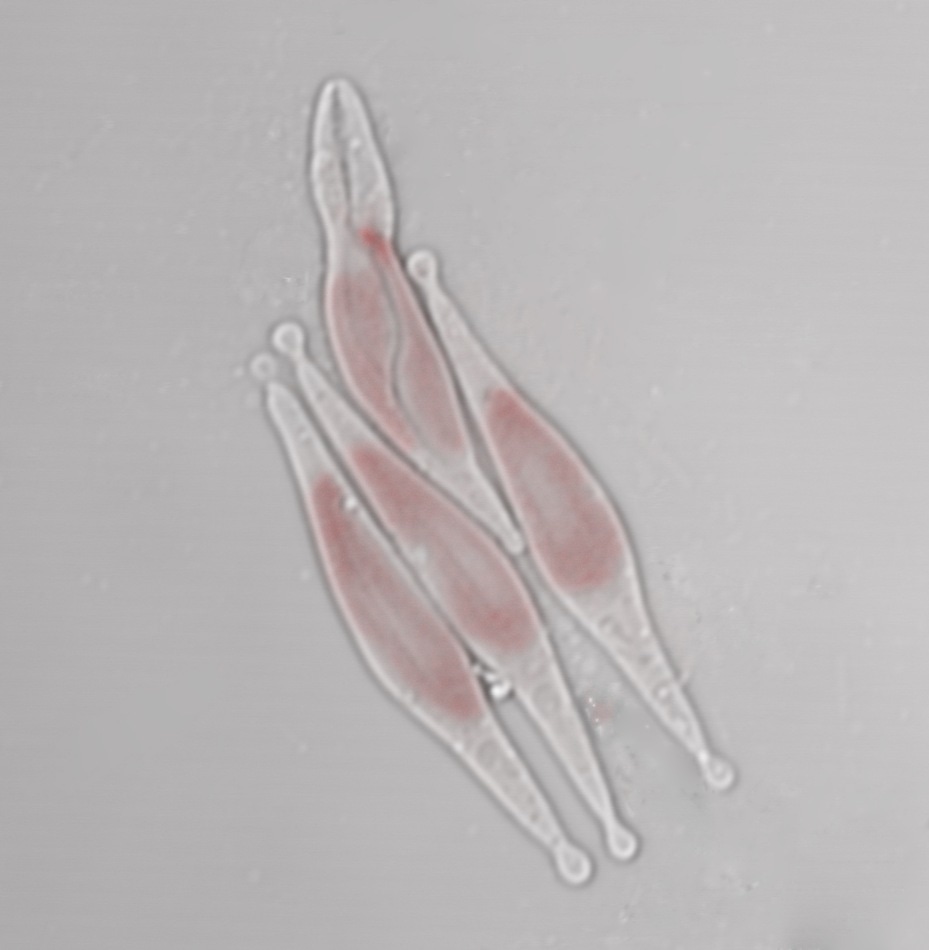Aug 14 2019
Researchers from Rutgers University have found how diatoms—a kind of alga that can generate 20% of the atmospheric oxygen—are able to use solar energy for photosynthesis.
 These are Phaeodactylum tricornutum diatoms. (Image credit: Ananya Agarwal/Rutgers Biophysics Molecular Ecology Laboratory)
These are Phaeodactylum tricornutum diatoms. (Image credit: Ananya Agarwal/Rutgers Biophysics Molecular Ecology Laboratory)
Their findings, reported in Proceedings of the National Academy of Sciences, could help produce highly efficient and low-cost algae-based biofuels and fight against global warming due to the burning of fossil fuels.
Oceans and other water bodies are rich in algae—energy factories that can transform light energy from the sun and carbon dioxide into chemical energy and can facilitate the removal of carbon from the air. Diatoms are one of the most prosperous species of algae to thrive on Earth. Their fossil oils can produce the highest quality petroleum on Earth.
For the first time, using a 3D bioimaging device, the research team at Rutgers University has demonstrated the structure of the proteins called Photosystem II, which helps diatoms to absorb sunlight and activate their photosynthetic process. The scientists discovered that there were two sets of such proteins in each cell, but only one set is active.
The structure of the active set is similar to that of pigment proteins such as green chlorophyll that can absorb light, provided in an antenna to use light for photosynthesis. The inactive set does not possess the antenna and therefore is not involved during photosynthesis.
The scientists are striving to understand the limitations of the photosynthetic efficiency in algae. They are also trying to use that efficiency to generate biofuels. According to the U.S. Department of Energy, algae are capable of storing energy in the form of natural oils, and under favorable conditions, they can produce more oils, which can then be transformed into biofuels for trucks, cars, trains, and planes.
The next steps are to try to understand the mechanisms that control the dynamics between the proteins and support robust biochemical energy production.
Wei Dai, Study Senior Author and Assistant Professor, Department of Cell Biology and Neuroscience, School of Arts and Sciences, Rutgers University
According to Paul G. Falkowski, study co-author and Distinguished Professor, who is the head of the Environmental Biophysics and Molecular Ecology Laboratory, School of Environmental and Biological Sciences, Rutgers University, “That would lay the groundwork for further research into developing more cost-effective biofuels from algae and displace petroleum.”
Researchers from Rutgers, Baylor College of Medicine in Texas, and Xiangya Hospital at Central South University in China have contributed to the study.